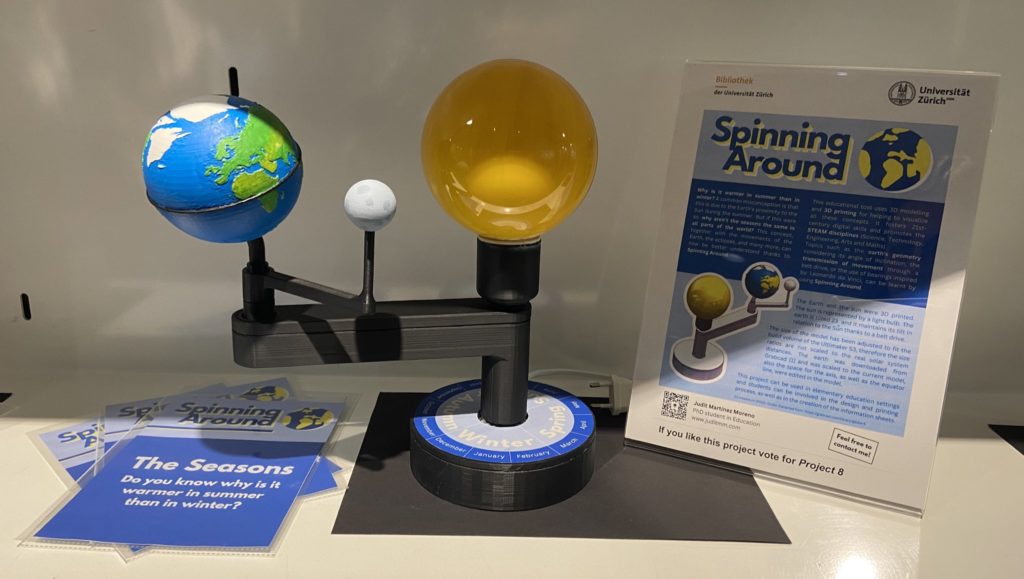
I struggled with understanding concepts such as the seasons, and I remember thinking that it was warmer in the summer because the Earth was closer to the sun (although this didn’t make sense because I knew it was cold in other places of the world).
When relearning about these concepts, I remember using mandarines to simulate the earth around the sun. Given this experience, I thought how useful it would be to have a physical model that would resemble the Earth, the Sun and the Moon. And this is where the idea of “Spinning Around” began to evolve!
I decided to develop an educational tool that would help with understanding these phenomena. Given that the University of Zurich Library was organising a 3D printing contest, this should definitely be 3D printed!
Design and 3D printing
The size of the model was adjusted to fit the build volume of the Ultimaker S3 available at the Tiny Makerspace of the UZH library, therefore the size ratios are not scaled to the real solar system distances. The earth was downloaded from Grabcad and scaled to the current model; the space for the axis and the equator line were added to the model.
The Earth, the Moon and the structure were 3D printed. The Earth is tilted 23 and it maintains its tilt in relation to the Sun thanks to a belt drive.
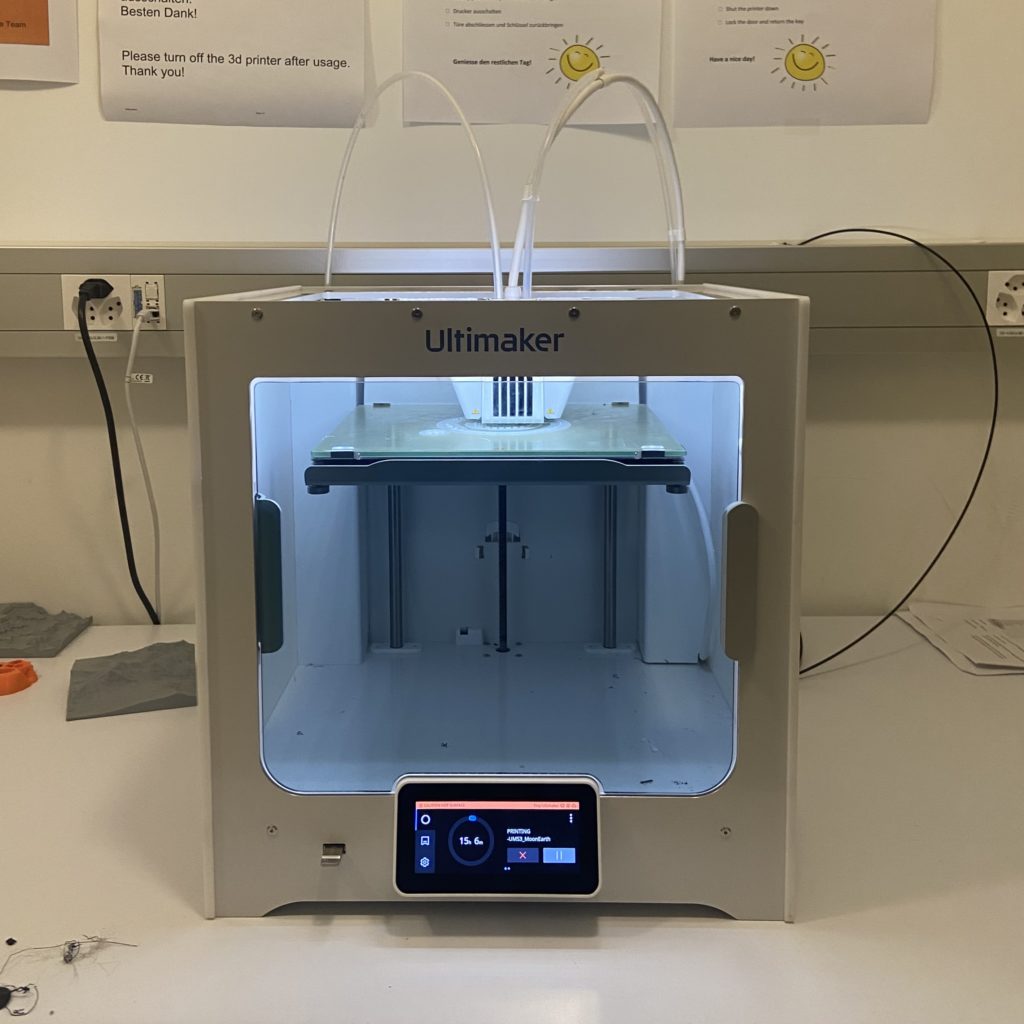
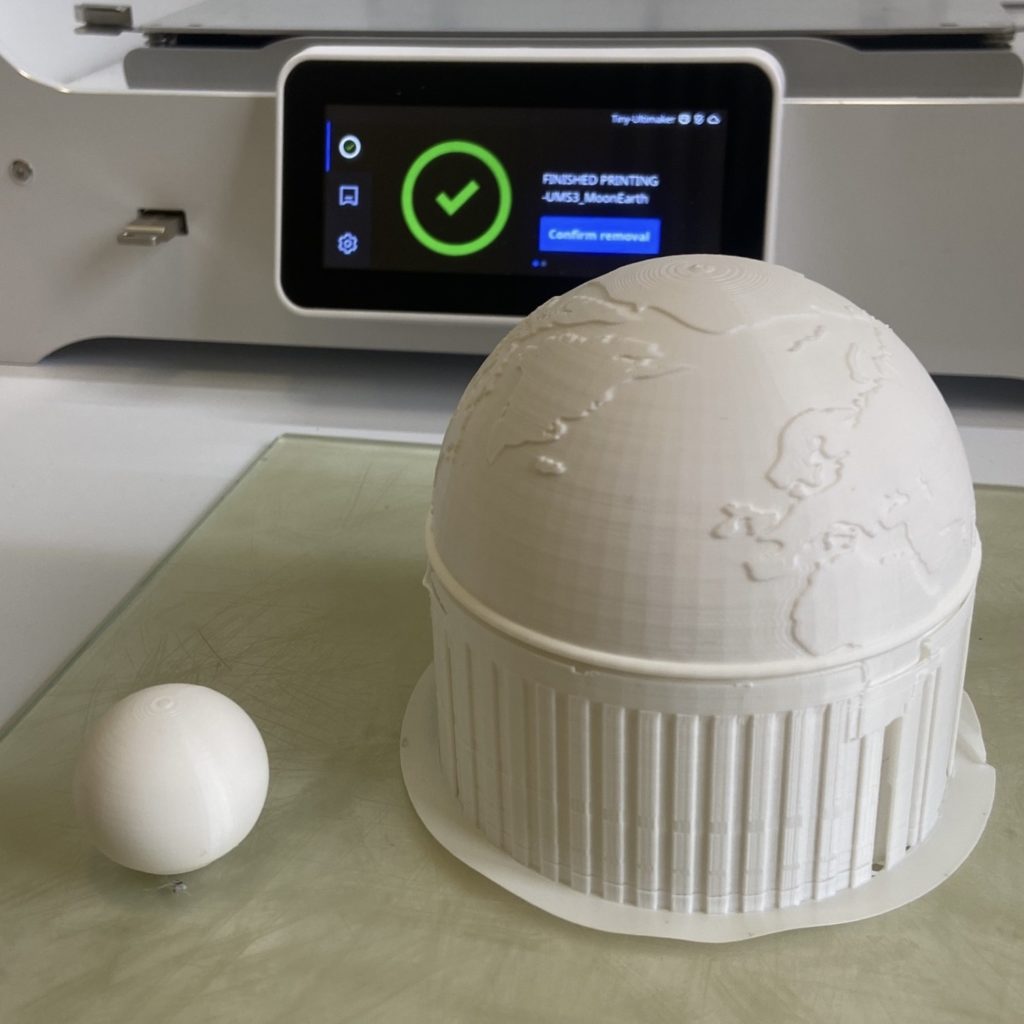
The sun is represented by a light bulb so that it can simulate day and night, as well as eclipses.
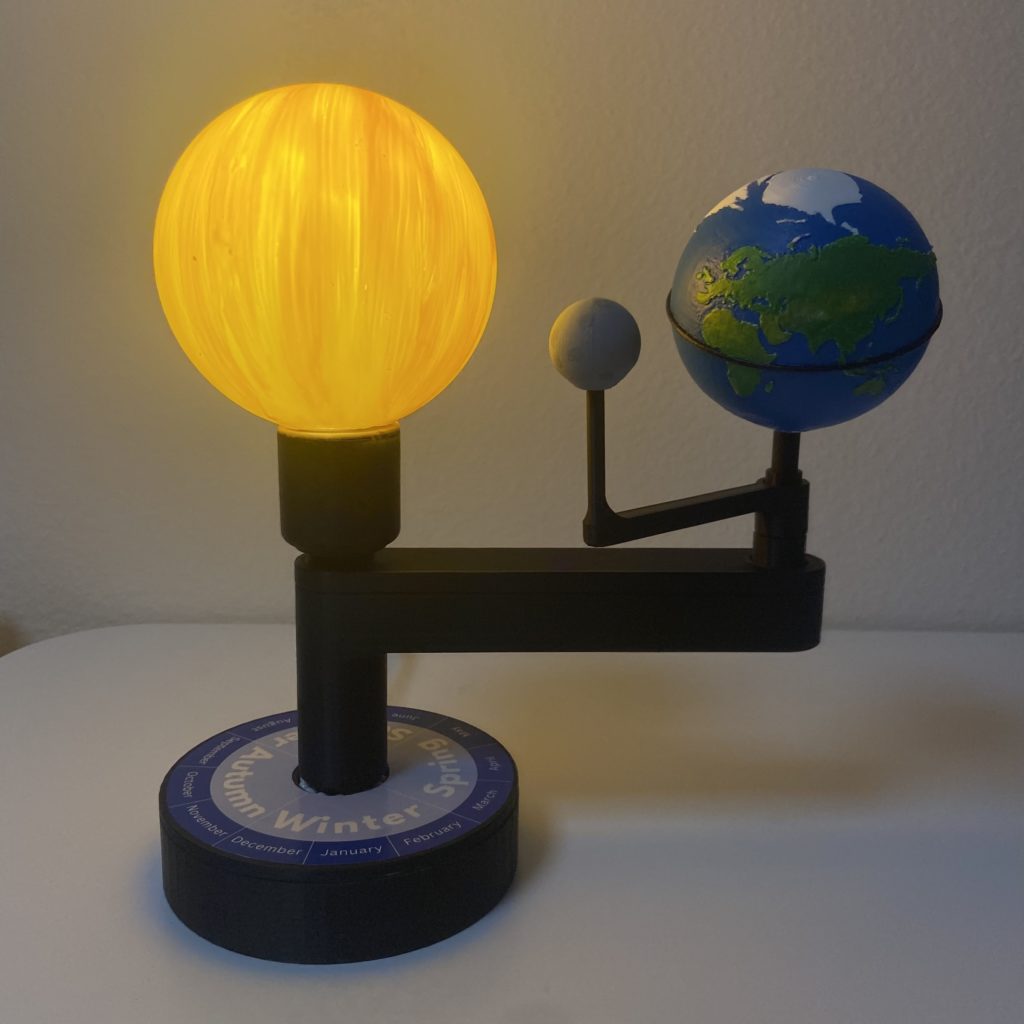
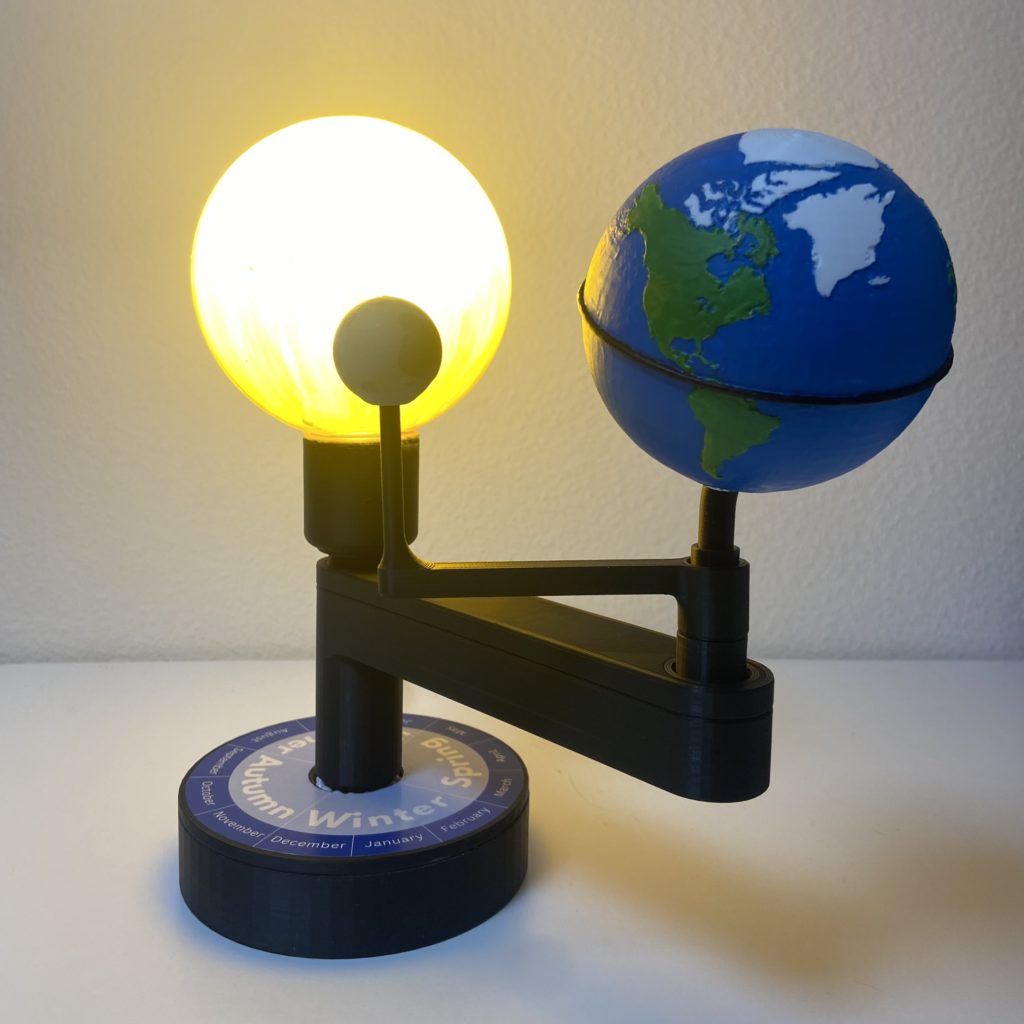
Learning with Spinning Around
This educational tool uses 3D modelling and 3D printing to help visualise all these concepts. It fosters 21st-century digital skills and promotes the STEAM disciplines (Science, Technology, Engineering, Arts and Maths).
Topics such as the Earth’s geometry considering its angle of inclination, the transmission of movement through a belt drive, or the use of bearings inspired by Leonardo da Vinci, together with the Earth movements, the seasons or the eclipses, can be learnt by using Spinning Around.
I developed some information/activity sheets to work on specific concepts, for example, the seasons:
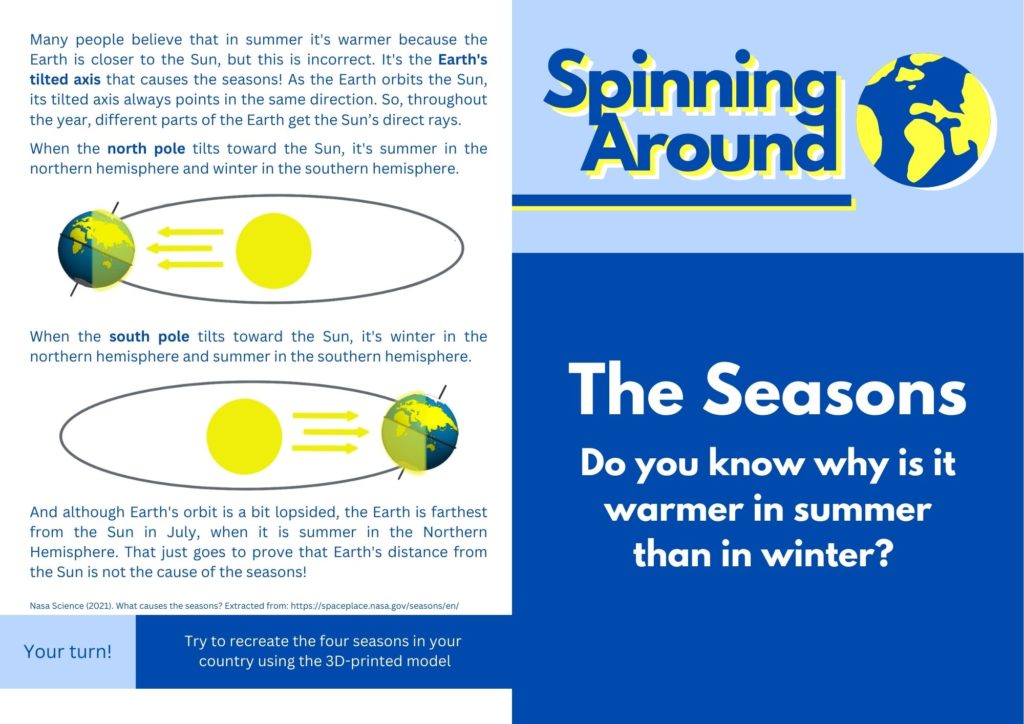
These sheets are designed to be printed and folded so that they create an A5-sized card as shown in the first image. Further sheets for the Earth’s movements, the eclipses and the tilt of the Earth can be downloaded at this link.
3D printing contest (for UZH members)
As already mentioned, the Library of the University of Zurich organises a 3D printing contest where this project can be voted. Therefore, if you like it and are a UZH member, consider voting under this link. Only UZH members can vote (UZH email must be provided), plus voters can win a 25CHF voucher.
In any case, I invite you to let me know if you like this project and share any thoughts you may have in the comments section!

